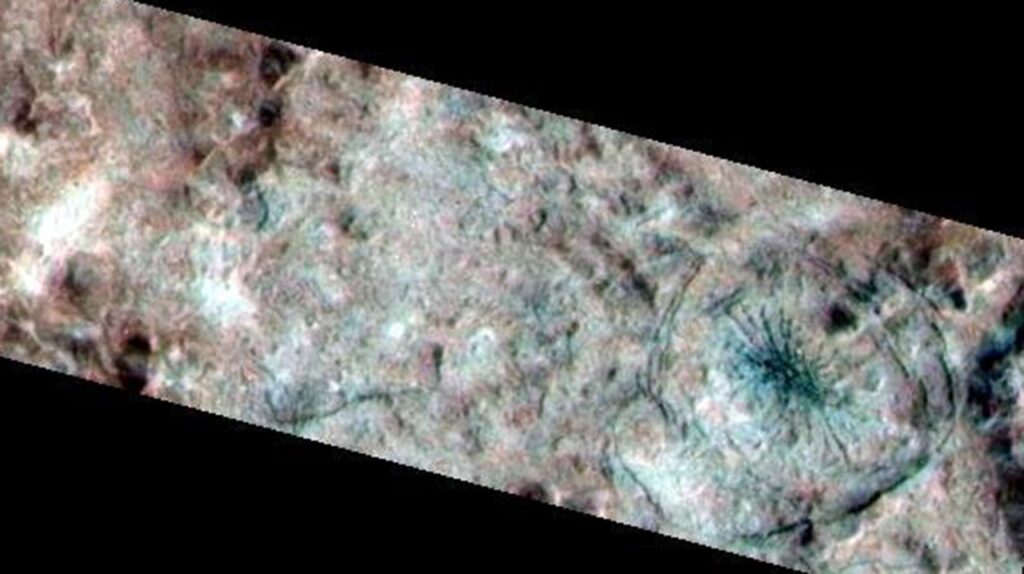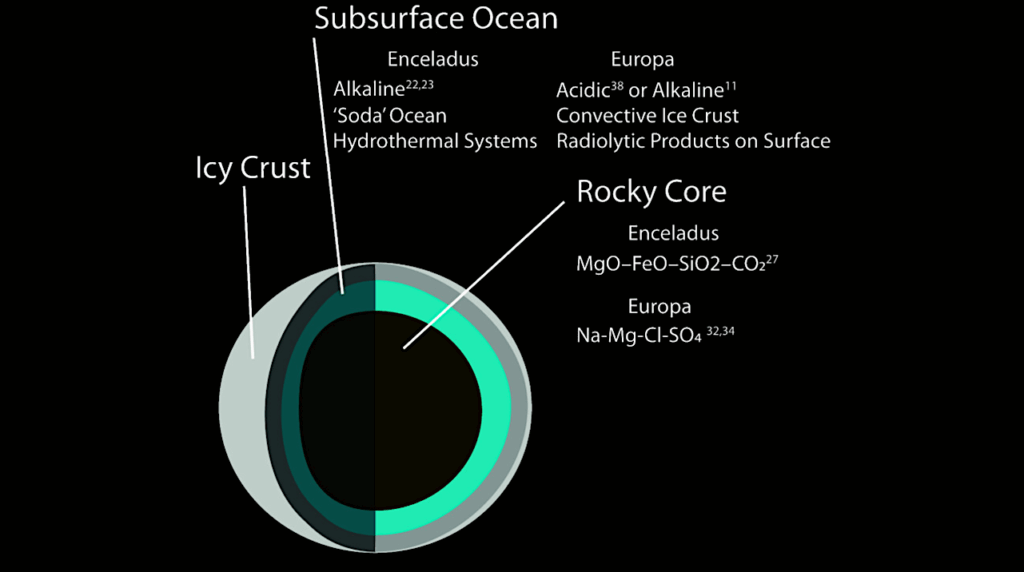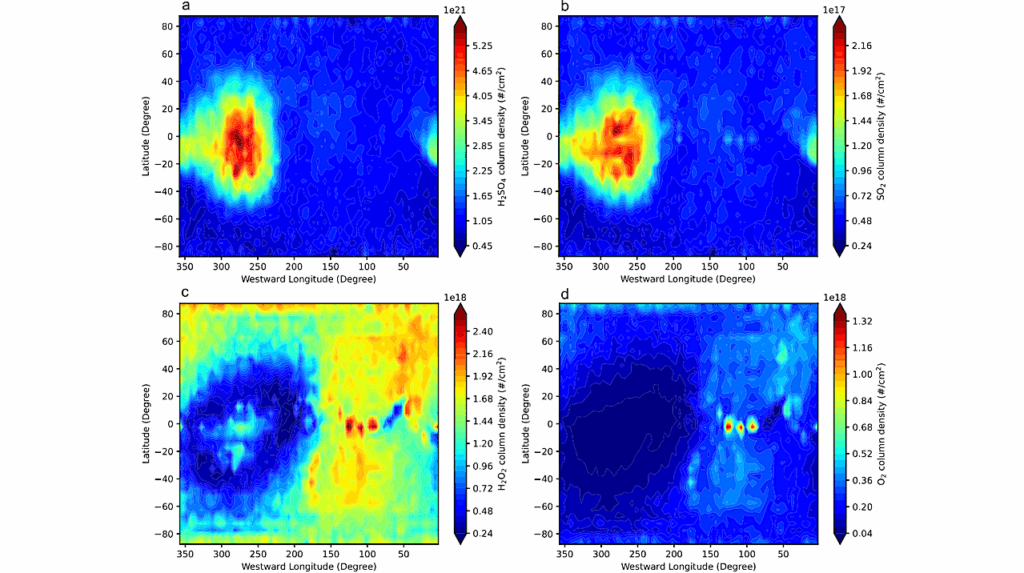How Salts on the Surface Could Aid in Modeling Europa's Ocean

Even though there are planned missions to explore Jupiter’s moon Europa, they are unlikely to sample the depths of its potentially habitable ocean
So a new paper, published in the journal Icarus, lays out how we may be able to probe those deep waters from their expression on the surface.
Europa is one of Jupiter’s 79 moons, and one of the largest moons in the Solar System. Inside Europa, beneath sheets of ice, liquid water rests on top of a rocky core, similar to Earth, and the chemical interaction between the water and the rock could make Europa one of the best known candidates for other life in our Solar System.
Most of what we know about the moon is thanks to NASA’s Galileo mission, which launched in 1989 and found evidence for Europa’s salty oceans. To date, no mission has landed on the moon.
Current models, based on the interactions between the ocean’s water and the moon’s rocky core, predict that the ocean’s chemistry is dominated by four species of ionic components (ions being electrically-charged atoms and molecules): sodium (Na), magnesium (Mg2), chlorides (Cl-) and sulphates (SO42). These ions are able to inter-act with each other, forming a range of compounds. It is the relative concentration of their resulting compounds that helps determine whether the ocean could be habitable.
“For comparison, many species thrive in the mildly salty oceans on Earth, whereas only a few species have been able to adapt to extremely salty environments like the Dead Sea,” says Mathieu Choukroun, who is a planetary scientist at NASA’s Jet Propulsion Laboratory and who was speaking on behalf of the authors of the Icarus paper, on which he is a co-author.
Chemical flowcharts
The researchers developed flowcharts, modeling the abundance of the different components under various scenarios, and then tested them in the laboratory. So, for example, a low concentration of magnesium ions (Mg2+) on the frozen surface would indicate an acidic ocean, whereas a high level would point to alkali waters. This constrains the type of life that could exist there.
Also, the presence of certain combinations of compounds on the surface could indicate the origin of other compounds. For example, it would not be possible for sodium chloride and magnesium sulphate to form together while freezing in an ocean-like mixture – one would form, or the other, depending on the concentration. If both were ob-served together on the surface, it would imply that one of them must have formed on the surface. “This would likely be the magnesium sulphate, formed from the frozen magnesium chloride that [was] later on subject yo sulphur implantation,” Choukroun explains.
He says that the flowcharts are the first step toward a convenient way to estimate the relative ionic concentrations in the water below Europa’s frozen surface.
Objectives for Europa Clipper
Planned future missions will be able to hunt for these ionic species via instruments in orbit or in-situ. The Europa Clipper mission, which is set to launch in 2023, will study Europa’s surface and interior through a series of fly-bys. Some of the onboard scientific instruments will be able to identify these components on the surface.
NASA is also considering a Europa lander mission, with the goal of sending a science platform to the surface of that moon to search for past and present life, and whether Europa could be habitable.
“A Europa lander mission is in formulation, but there is no current plan to drill [into the surface] all the way to the ocean,” says Choukroun. “Thus, until a future mission, whether it is a lander, rover, or submarine, is able to reach the ocean directly, our understanding of the ocean composition will only be through indirect physical measurements.”
As the authors write in their paper, “as exciting as these missions will be, they will only be able to access and interrogate the near surface … Our near-term ability to characterize the sub-surface ocean fluids will rely on their expression on the surface.”
Mixing salts
Jeffrey Kargel, who is a senior associate research scientist at the University of Arizona in the United States, says that the paper could direct aspects of future research on Europa’s oceans, and “serves to keep attention focused on the fact that the composition of the surface and the ocean are likely linked.” However, he says that a major weak-ness in the research is that the authors did not include mixed salts, such as bloedite, which is a hydrated sodium magnesium sulfate mineral.
“We don’t know the temperature of the ocean, so we cannot conclude that the temperature rules out such salts,” Kargel says. Such salts provide a close match to the near-infrared spectra recorded during the Galileo mission, according to research published in 1999.
In the paper, the authors acknowledge that their research only examines a few possible ions. Choukroun says that, “Depending on future results of geochemical models applied to Europa, we will refine this list of species that are predicted to be both somewhat abundant and important for biology.”
The study, “Insights into Europa’s ocean composition derived from its surface expression,” was published in the journal Icarus. The work was supported in part through the NASA Astrobiology Institute (NAI) element of the NASA Astrobiology Program.








